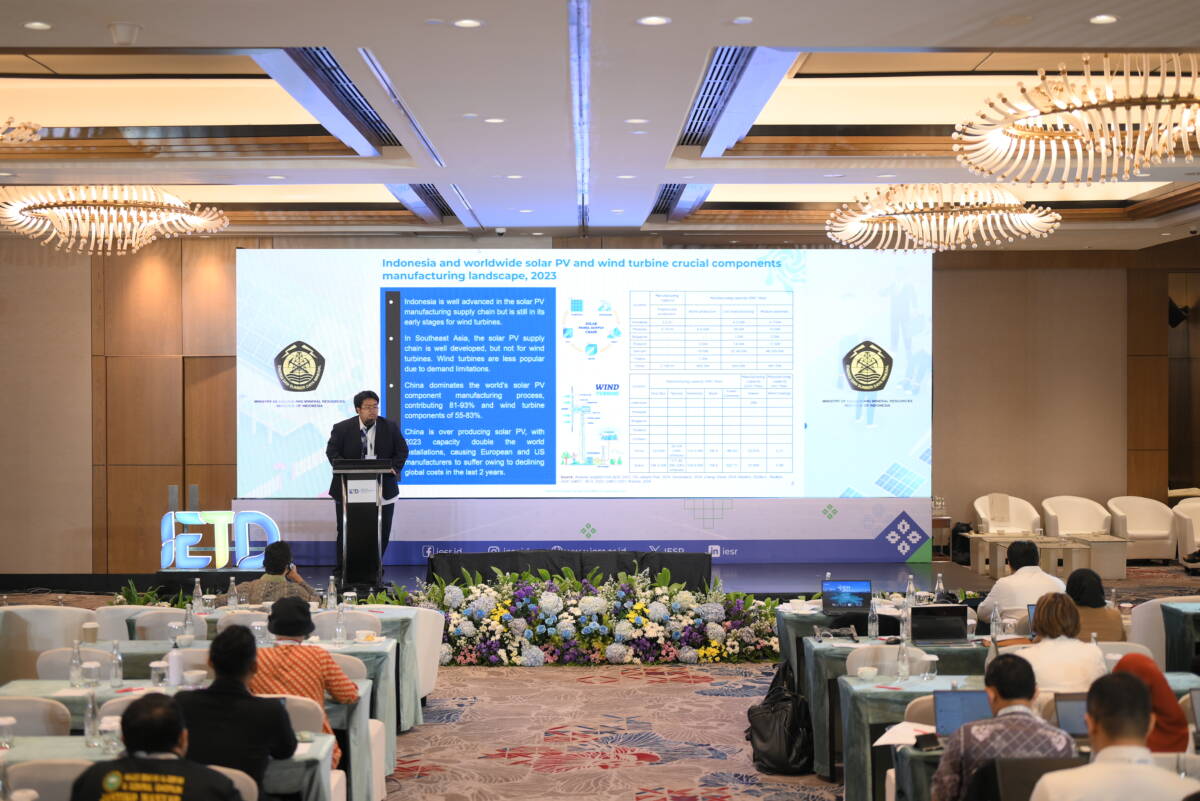
Strengthening the Renewable Energy Supply Chain in Indonesia
Jakarta, November 6, 2024 – The extensive utilization of renewable energy is set to boost the development of the renewable energy manufacturing industry, ... Read more.
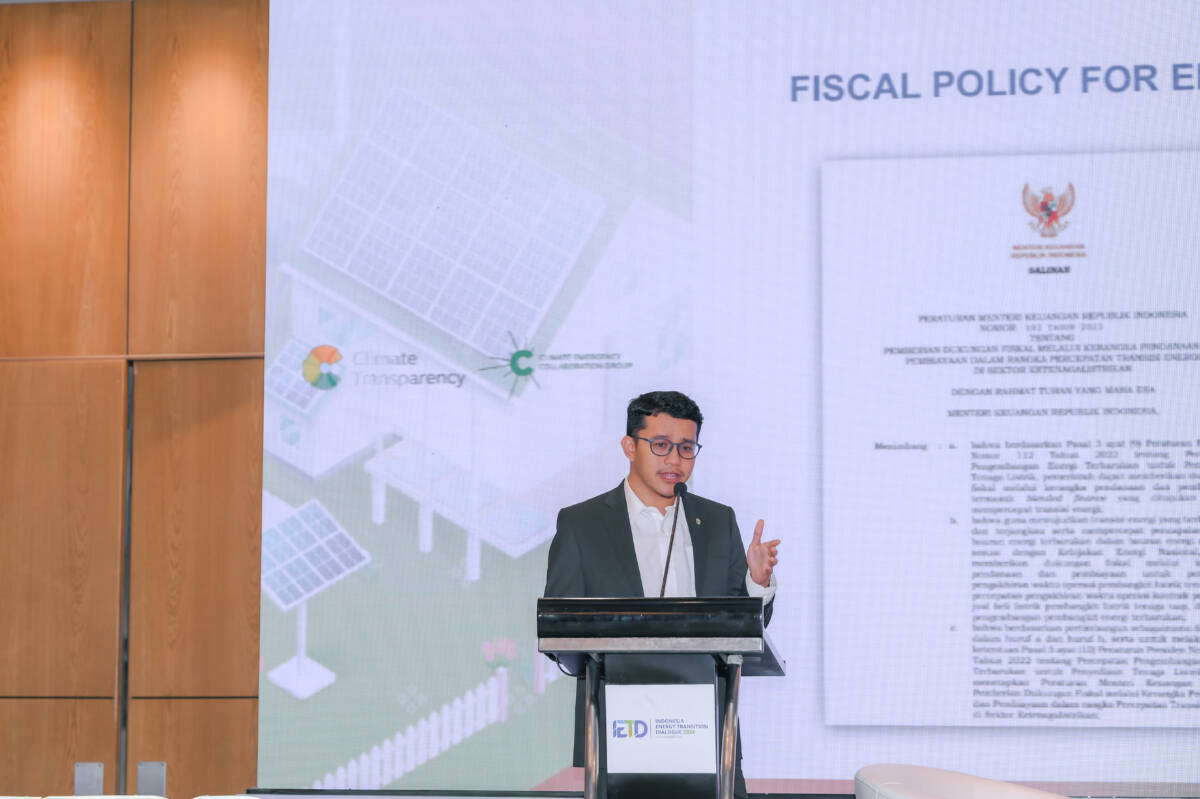
Indonesia Needs to Immediately Establish an Early Retirement of Coal-fired Power Plants Roadmap
Jakarta, November 6, 2024 – Indonesia must promptly establish a roadmap for the early retirement of coal-fired power plants to provide a reference for ide... Read more.
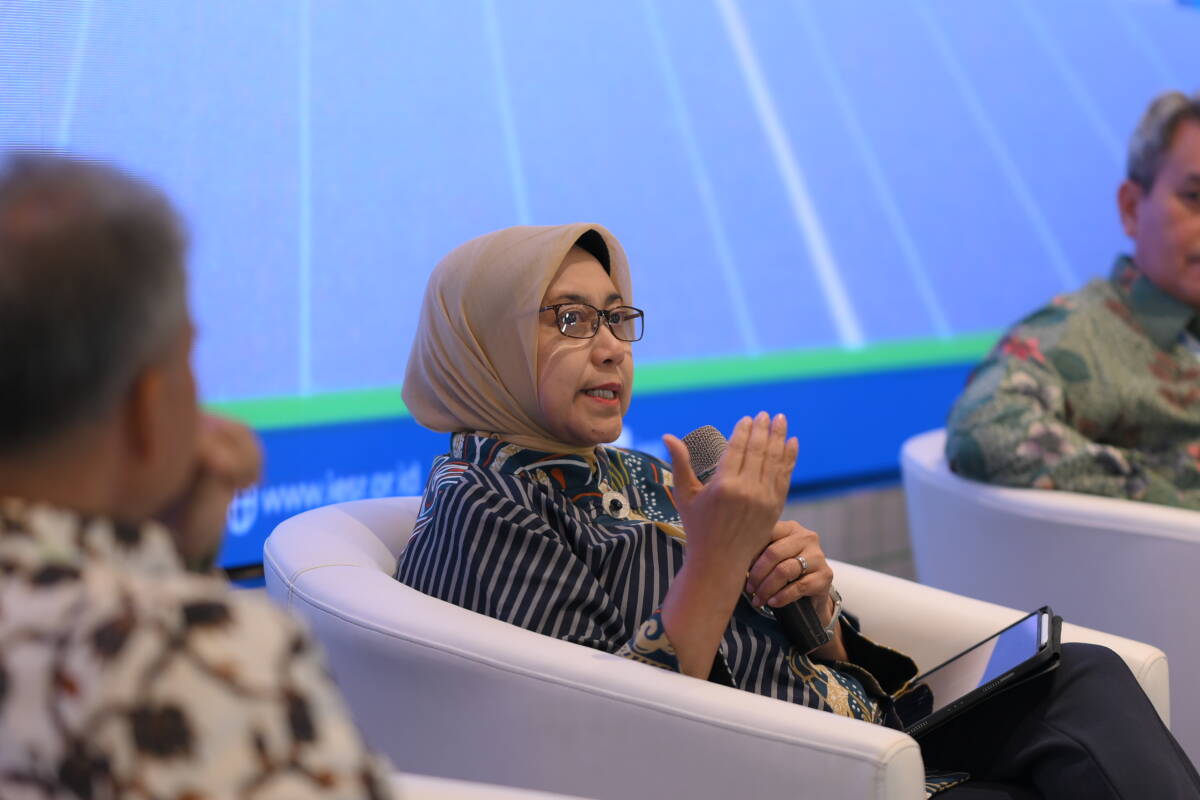
Increased Renewable Energy Mix Reflects Strong Motivation for Decarbonization
Jakarta, 4 November 2024 – The Draft Government Regulation on the National Energy Policy (RPP KEN) has entered the harmonization phase at the Ministry of ... Read more.
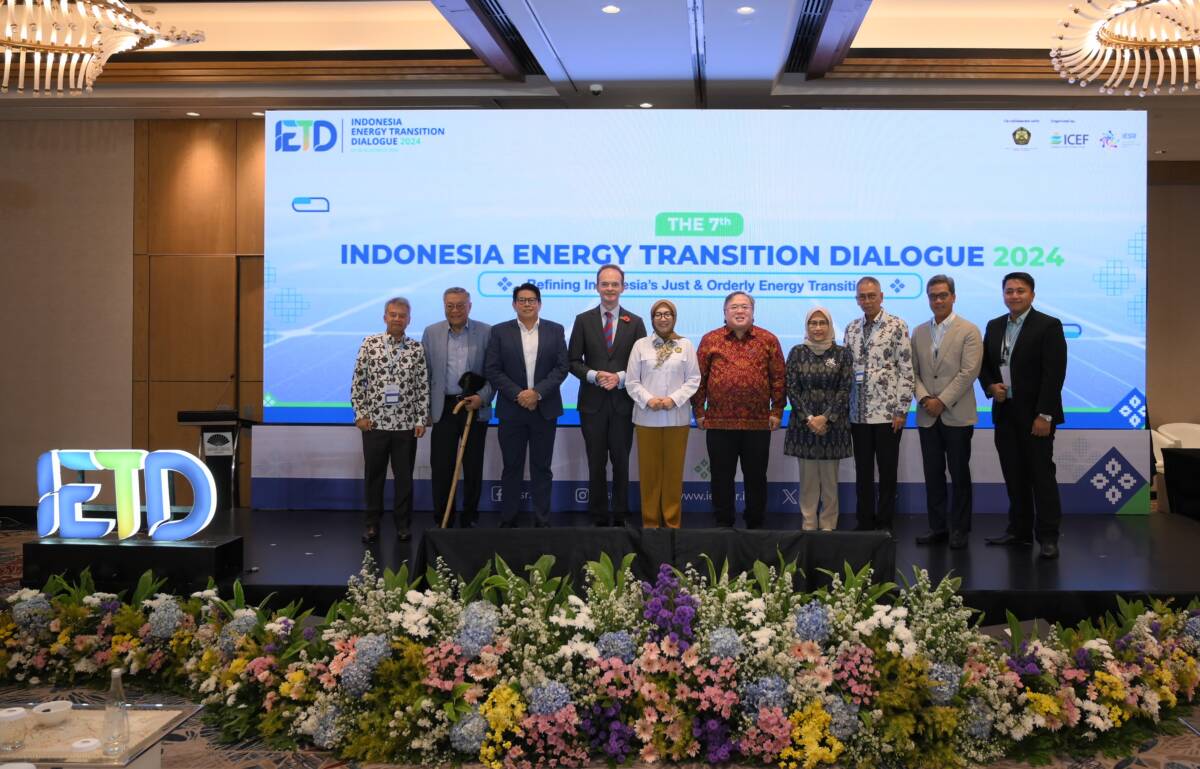
Energy Transition Needs to Be Just and Orderly
Jakarta, November 4, 2024 – Ensuring a just energy transition is essential for achieving the net zero emissions (NZE) target by 2060 or sooner, while also... Read more.
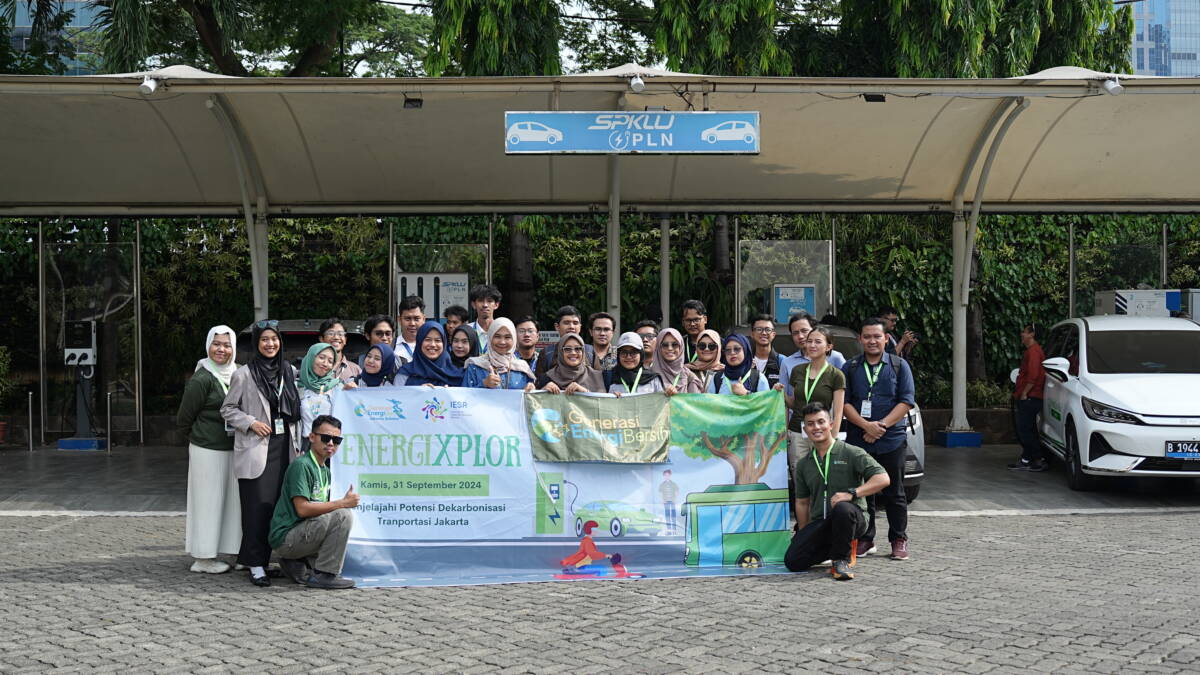
Encouraging Innovative Solutions to Decarbonize Transportation from Jakarta to the Subnational Levels
Jakarta, November 1, 2024 – In 2021, the transportation sector was the second largest contributor to greenhouse gas (GHG) emissions in Indonesia. A study ... Read more.
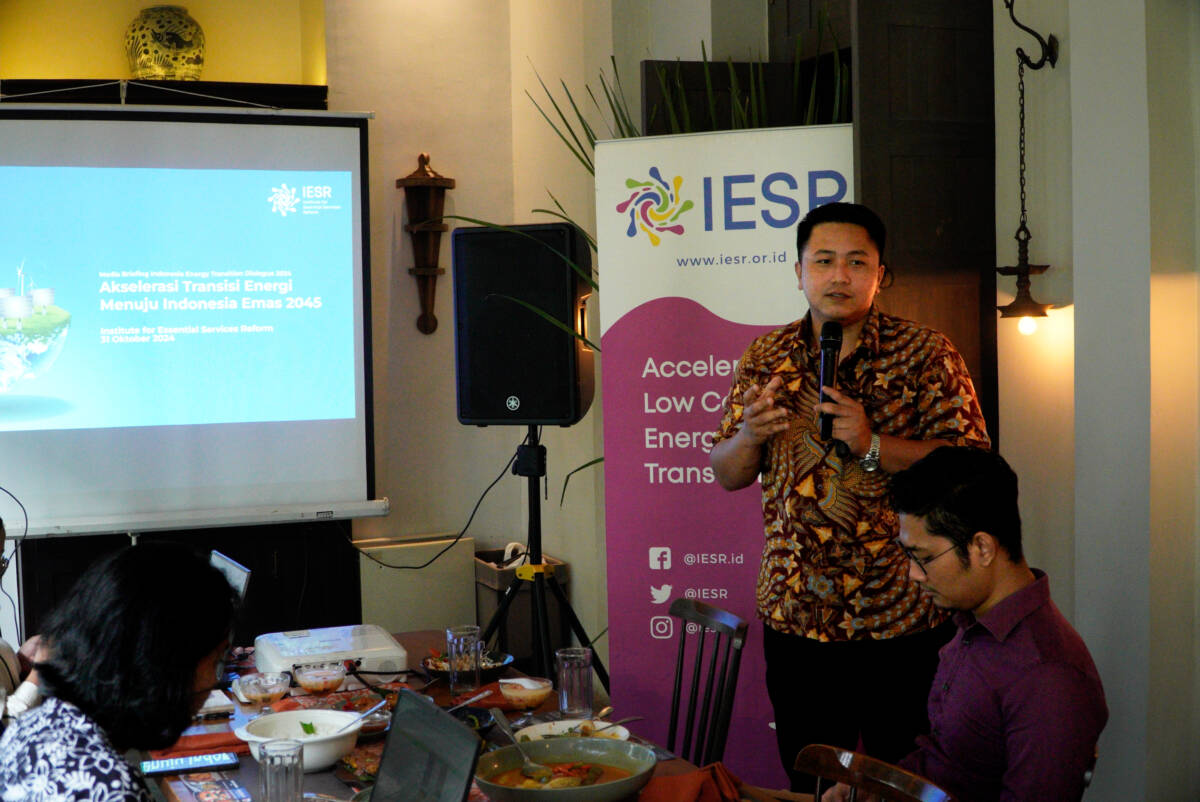
Five IESR Recommendations for Achieving Energy Independence through Energy Transition
Jakarta, October 31, 2024 – Indonesia’s challenging energy transition process demands national commitment and strong leadership to ensure it is fair for... Read more.

The Bali Coalition for Net-Zero Emissions Highlights the Importance of a Grassroots Approach to Climate Adaptation and Mitigation in Bali
Ubud, October 27, 2024 – The Province of Bali, through the launch of the Bali Net Zero Emissions initiative in August 2023, has reinforced its commitment ... Read more.
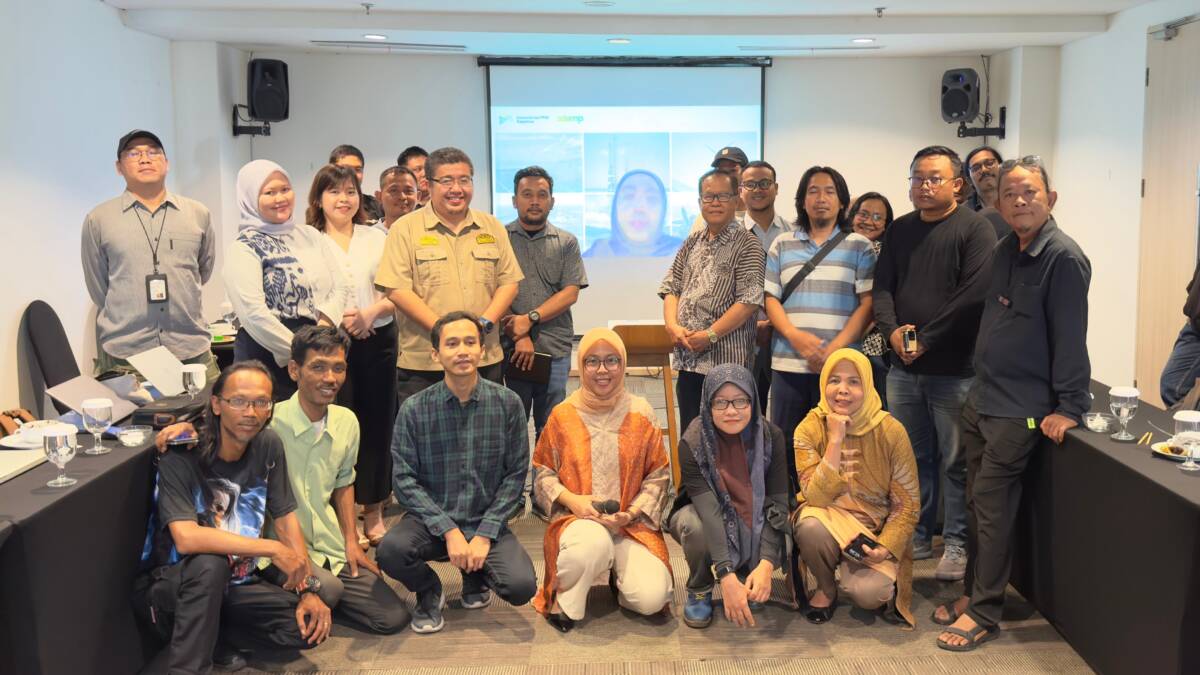
Encouraging the Implementation of Just Energy Transition in the Regions in the Prabowo-Gibran Era
Palembang, October 23, 2024 – The inauguration of President Prabowo Subianto and Vice President Gibran Rakabuming Raka on Sunday (20/10/2024) marks a shif... Read more.
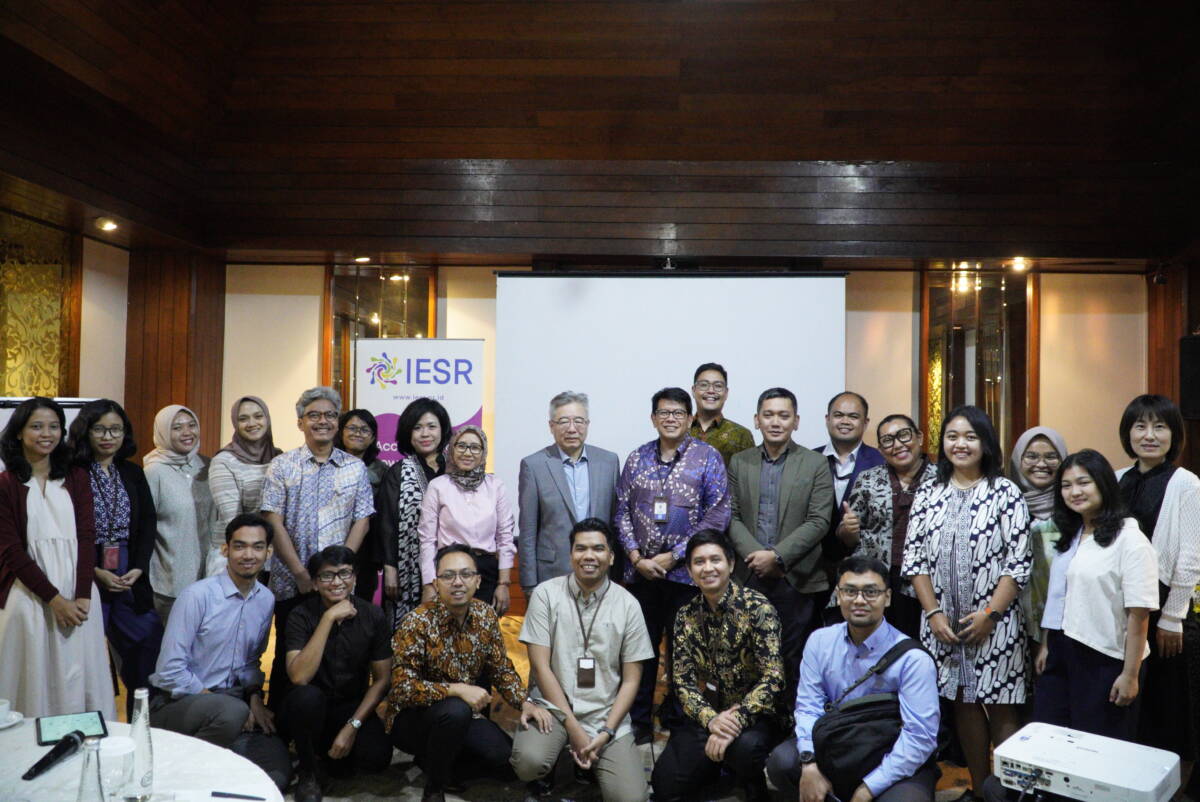
Strengthening Indonesia-China South-South Cooperation for Energy Transition in Prabowo’s Government
Jakarta, October 22, 2024 – Indonesia has officially welcomed a new leader with the inauguration of President Prabowo Subianto and Vice President Gibran R... Read more.
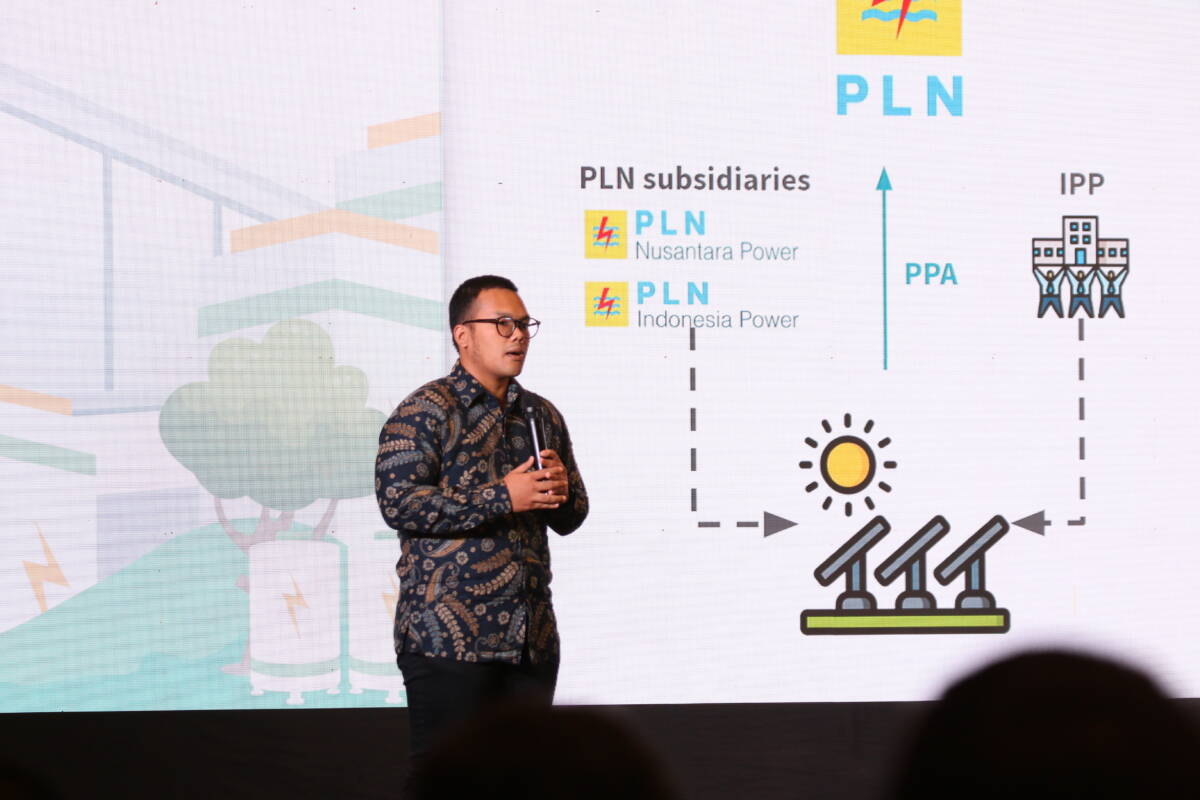
Opportunities for Increased Adoption of Solar Energy and Energy Storage Systems in Indonesia
Jakarta, October 15, 2024 – The Institute for Essential Services Reform (IESR), a leading energy and environment think tank, has released two new studies ... Read more.

